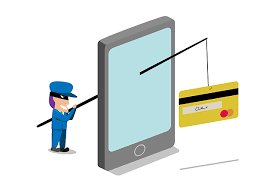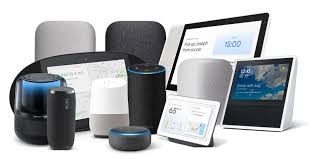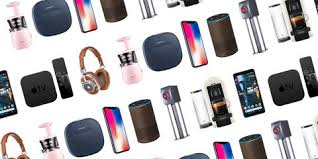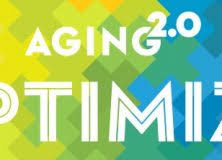When Pew stops tracking senior adoption, does that imply a market saturated? Rant on. Note this Fact Tank aggregation of technology adoption statistics (tech overall among seniors, last reported in 2016) – and the most recent data cited on Internet use, seniors were quoted in a 2016 survey, 44% of responders did not use the internet users. Of those that do, older adults aged 65+ said they had little to no confidence in their ability to use electronic devices to perform online tasks. Let’s think about their non-confidence (not broken down into the 65-74) and the 75+ who are the Real Seniors.
Does that fear imply lack of training? Or too much media reporting about scams, breaches, and identity theft – most of which it is difficult to detect and nearly impossible to prevent? Who knows, since Pew appears to be largely done – after all, they note, 89% of Americans are online and they do not survey all questions each time. AARP published a survey last year that included responders in their 70s -- we stay tuned for the next update.
Are those who should care about this not doing enough? Here are questions to ponder moving into 2019 for those whose job, business, or non-profit organization is explicitly to help seniors go online (you know who you are):
- For seniors, why is there a problem with non-use? Note the research from Michigan State cited in an AARP article: "Greater technology use was associated with better self-rated health, fewer chronic conditions, higher subjective well-being and lower depression." The study also found that technology use reduced feelings of loneliness. And let’s not forget how many services can be discovered and accessed online, including scheduled food delivery, transportation requests, buying tickets and signing up for local events. And have we mentioned online banking, accessing Social Security information, buying savings bonds – all online.
- Are there still senior centers or organizations that do not have high speed internet? You know where they are – maybe they haven’t figured out the right source of grants, like, for example, Grantmakers in Aging? Senior centers are partially funded by the Older Americans Act – which also provides Meals on Wheels. But there is nothing in the Act (beyond partial funding of senior centers) that specifies professionally delivered training of seniors on technology use or supporting seniors in their usage.
- Why isn’t technology training of seniors required to be delivered by professionals? Is it because it is viewed as non-essential because it is ‘free’? The Geek Squad isn’t free, but why is there no magnanimous donor focused on helping seniors who could fund a regular visit of several hours to a library, senior center or other community center who could help individual older adults during designated hours with their devices? AARP pays for training it offers in its regional workshops, which is free to participants. Presumably organizations like OATS, expanding outside of NYC (but still reaching a small percentage of seniors), must use grants to pay trainers to do the offered training, which is free to attendees.
- So why isn’t ‘volunteer’ training good enough? Because at today’s pace of technology change, it can’t be. Read the list of Geek Squad services again. Or look at another nationwide competitor, HelloTech (ads bash Geek Squad) or Bask or many paid services in various geographies. You hopefully get what you pay for. Free training may be well-intentioned – and it is appropriate in stores of carriers who provide the connectivity. But it is very expensive to stay current with the myriad of always-shipping new devices and OS variations and upgrades, required to keep a device secure. Add the difficulty (and costs) of getting an operational router, high speed internet printing from multiple devices, streaming from devices.
- Smart phones for seniors: why can’t every Real Senior have one? And no, it’s not to read text messages heads down and fall into a manhole – nor is it about the social media company that cannot be named. Smartphones are useful in so many ways that without one, day-to-day life and flexibility are circumscribed. GPS turn-by-turn directions, research about what’s nearby when traveling, renting a car, checking reviews before eating in a restaurant or checking into a hotel, for starters. And that doesn’t count emergency advice from WebMD or Mayo Clinic. So that brings me to:
- Why isn’t there a senior discount to get a smartphone? No, I am not talking about the cell phone plans. Senior discounts are offered in at least 180 categories. But what about 50% discount an iPhone or Galaxy S9 – to get them into the 21st century of their grandchildren, assuming that other infrastructure is available to help them (in-store training, upgrade assistance, and on and on.)
- When will everyone have a voice-activated TV remote? Voice-activation and control will surely be standard for smart TVs, but sites that cater to seniors aren’t sources for finding them. Nor is there any apparent interest in re-engineering older remotes to support voice input. Why not?
Baby boomers cross 73 in 2019, becoming Real Seniors in 2 years. They will likely live, on average another 10-15 years or more. For the next 18 years, the growth in the number of Real Seniors will continue. Shortages of in-home care workers are worsening, new, hopefully tech-enhanced services are already forming. Senior living firms, meanwhile, are over-expanding to accommodate them, hopefully in communities with high speed internet and WiFi access everywhere. For all of the Real Seniors to be, now’s the time to tech-enable their future, don’t you think? Let’s not keep having this conversation for the next 18 years. Rant off.
from Tips For Aging In Place https://www.ageinplacetech.com/blog/real-seniors-lack-essential-technology-who-will-make-it-happen-2019
 Scammers are creative – each cell phone number is 'smishing' opportunity. How about a text message with a picture of the sender, someone you know, pitching a fund-raising and time-limited opportunity – in a category the recipient knows well. Except that it is fake, finding the phone number because it is widely distributed. And as an added bonus, the sender extracts the picture from now-accessible contacts (easily scraped from LinkedIn, press releases, Gmail messages, etc.). Scammers seize the opportunity and send you a very believable text message.
Scammers are creative – each cell phone number is 'smishing' opportunity. How about a text message with a picture of the sender, someone you know, pitching a fund-raising and time-limited opportunity – in a category the recipient knows well. Except that it is fake, finding the phone number because it is widely distributed. And as an added bonus, the sender extracts the picture from now-accessible contacts (easily scraped from LinkedIn, press releases, Gmail messages, etc.). Scammers seize the opportunity and send you a very believable text message. Who can and will be talking to their technology? Quite a few people will, though it is hard to get a real number – which is ironic, since Amazon, Google, Apple, Samsung, etc. all know how many they have shipped. And they also know
Who can and will be talking to their technology? Quite a few people will, though it is hard to get a real number – which is ironic, since Amazon, Google, Apple, Samsung, etc. all know how many they have shipped. And they also know  A short month saw plenty of food – and provided food for thought. Many (54 million!) traveled during the US Thanksgiving holiday,
A short month saw plenty of food – and provided food for thought. Many (54 million!) traveled during the US Thanksgiving holiday,  Warning -- this is not a blog post about what to give to seniors. There are plenty of click-bait websites topping the search list, like
Warning -- this is not a blog post about what to give to seniors. There are plenty of click-bait websites topping the search list, like  Check out this startling sampling of Apple user complaints...
Check out this startling sampling of Apple user complaints...  Interested in innovation in the age-related market? You are based in the west coast or need to be there to do other business? Then you are likely going to attend Aging 2.0’s annual Optimize event this week in San Francisco, where you’ll get to hear Dr. Joseph Coughlin of the MIT Age Lab describe his
Interested in innovation in the age-related market? You are based in the west coast or need to be there to do other business? Then you are likely going to attend Aging 2.0’s annual Optimize event this week in San Francisco, where you’ll get to hear Dr. Joseph Coughlin of the MIT Age Lab describe his  October – autumn leaves drift down and large events gear up. Traversing the trade show world, so much tech, so little time. And other shows await, including
October – autumn leaves drift down and large events gear up. Traversing the trade show world, so much tech, so little time. And other shows await, including